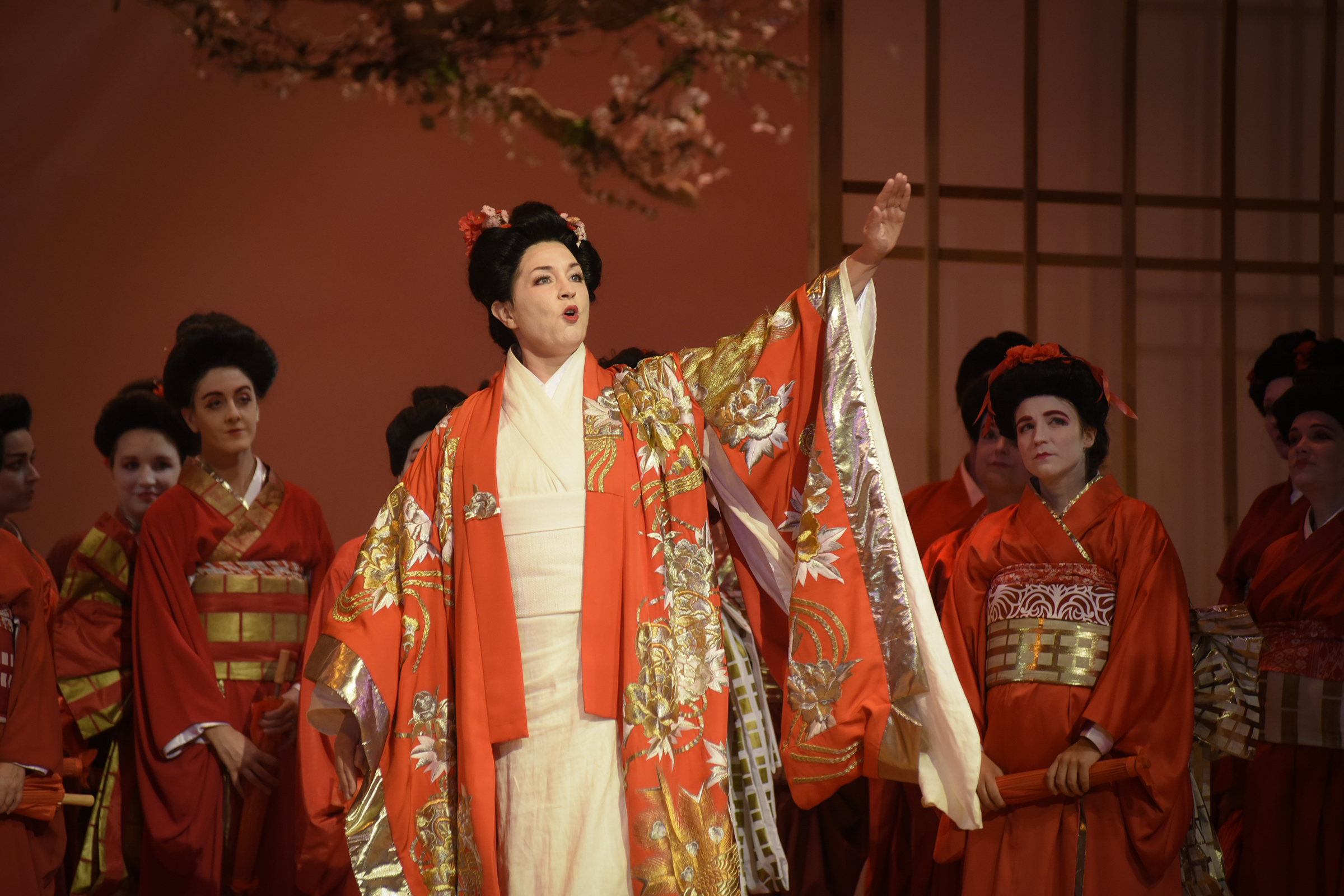Giacomo Puccini’s famous opera is now showing at the Opéra de Montréal
Love was in the air as l’Opéra de Montréal (ODM) kicked off its 36th season with a stunning interpretation of Madama Butterfly, by Giacomo Puccini, at Place des Arts on Saturday. Although this tale is from another political and social era, François Racine, the stage director, portrays it with an exciting freshness and transforms it so that it can be palatable for contemporary audiences. Racine weaves a tale that focuses on the profound nature of true love, with all its foibles, and shares the simplicity, innocence, candour and beauty he says he experiences each time he sees this opera.

Puccini uses three acts to spin a tale that pitches Western culture against that of the East, juxtaposes innocence with experience and showcases the profound nature of true love, along with all its illusions and disillusions.
Set in the port city of Nagasaki, Japan at the turn of the 20th century, the libretto is loosely based on a true story of a young geisha whose innocence and beauty captivates an American naval officer who marries her, and then returns to sea in search of an American wife. The geisha had renounced her ancestral gods and converted to Christianity before her marriage. The American does not return and she takes charge of
her own destiny.

The first act opens with Pinkerton, the American, examining a house he has rented for himself and Butterfly, his betrothed. Sharpless, the US consul, appears and Pinkerton reveals that he is unsure that he loves Butterfly, but that he is bewitched by her charm and innocence. Before she appears on stage, Butterfly is heard telling her friends and family that “she is the happiest girl in Japan, or in the world.” The marriage takes place and the act ends with the couple singing the famous long love duet that evokes strong sensual feelings and seems to equal foreplay while their body language displays their happiness.

Act II opens with Butterfly at home with Suzuki, her loyal servant, waiting for Pinkerton. She fantasizes about his return, but remains loyal to him, despite the presence of other suitors. Three years pass, and Pinkerton asks Sharpless to inform Butterfly that he will not return. Sharpless attempts to read Pinkerton’s letter to Butterfly, but she interrupts him repeatedly, so he gently asks her what she would do if he never returned? She replies that she cannot go back to being a geisha because now her songs would be sad, not happy. Later, Butterfly sees Pinkerton’s ship enter the harbour, and waits for him to come.

In the final act, Pinkerton returns, but asks Suzuki not to wake Butterfly. It is Suzuki who tells Butterfly that Pinkerton now has an American wife. Butterfly realizes that she has lost everything, but feels satisfied, knowing that she experienced the love of an American husband and bore his son. She decides to die with honour, rather than to live with shame.
Melody Moore, a soprano, makes her debut with ODM as Butterfly. While she is much taller and heavier than one expects of a geisha, she handles this demanding role effortlessly. She is convincing as a playful, innocent 15-year-old, who is in love, and then transforms into a sensuous wife and mother who ultimately takes charge of her own destiny. The intense emotions she evokes with her voice and body language are palpable. Her rendition of “Un bel dì,” the opera’s most famous aria, received robust applause.
Antoine Bélanger, a tenor, returned to ODM as a replacement for Demos Flemotomos as Pinkerton for this performance, and although his voice and dramatic presence were flat at the outset, he quickly gained confidence and transformed into the cad he portrayed.
Morgan Smith, baritone, makes his debut with ODM as Sharpless, the US consul stationed at Nagasaki. His rich tones harmonize perfectly with the tenor and the soprano voices.
Allyson McHardy, a mezzo-soprano, plays Suzuki, Butterfly’s devoted maid with all the charm, manners and politeness common within Japanese culture.
Puccini’s score includes Japanese-sounding melodies, punctuated by “The Star-Spangled Banner” and is intertwined with 10 pieces of classical and popular Japanese music. The orchestra, led by James Meena, succeeds in evoking all the feelings and passion on display.
This is particularly evident in Act II, when the orchestra almost takes on the role of a character—informing the audience of the depth of a scene—as the music describes and evokes the feelings Butterfly experiences while she maintains a vigil for her husband, the anguish she feels as she prepares to relinquish her son and again in the emotionally-charged final scene.
The stage sets are elegant, but simple and airy. The decoration is sparse and cherry blossoms add a distinctly Japanese aura. The costumes are very elegant, but remain tastefully simple. Red fabric is contrasted by varying shades of cream and gold, which provides richness without opulence.
In the final scene of Act I, Butterfly is in a white gown, and Pinkerton, jacketless, is in his white naval uniform. Here, white is used as a prop to depict the very sensually charged, yet innocent moment the couple experiences as they move towards consummating their marriage.
The lighting is effectively used to create a mood, or to signal a change in the time of day. In ODM’s synopsis of the opera, Puccini is quoted to say this is one of “the most sincere and evocative” of all his compositions. The libretto is uncomplicated and appeals to the initiated, as well as those who may be new to opera. As the dying strains of the orchestra were heard, the audience erupted into a round of applause that became a standing ovation, lasting at least five minutes.
You have the chance to see Madama Butterfly at Salle Wilfred Pelletier, Place des Arts, until Sept. 28.




